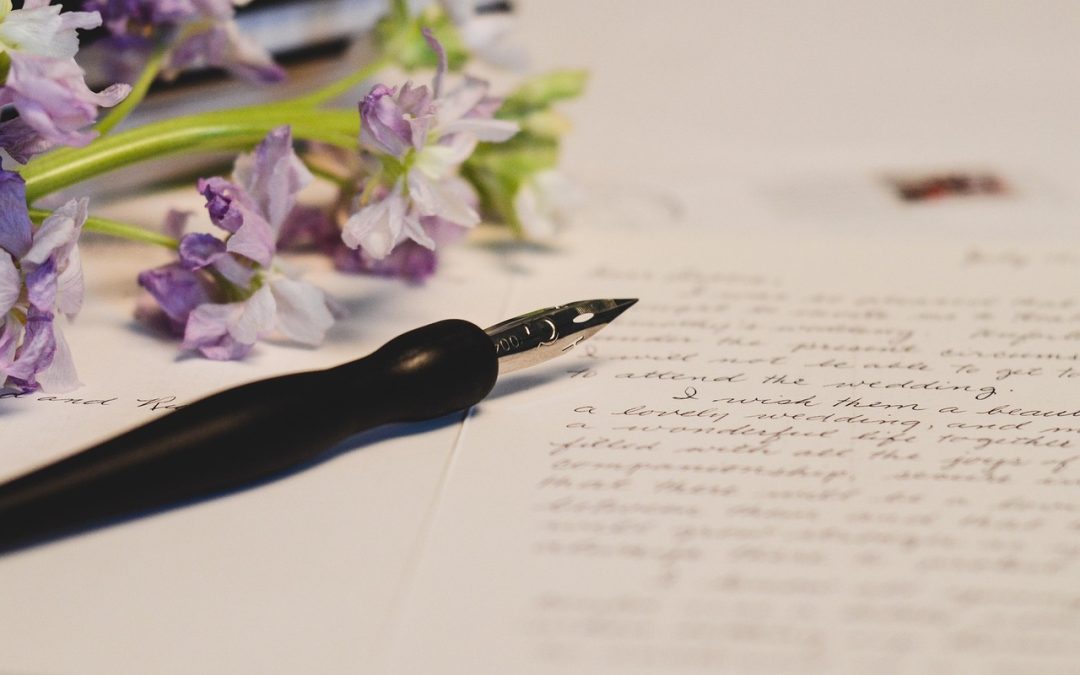
by Susan Sondheimer | Blog
As writers, we’re often told that writing is rewriting. And, let’s be honest, it can be a daunting task. But, what if I told you that with the right mindset and tools, you can take control of the writing, editing, and publishing process? The DIY way is not only empowering, but it’s also a viable option for writers who want to maintain creative control and produce high-quality work. In this post, we’ll explore the DIY way of writing, editing, and publishing, and provide you with the tips and resources you need to get started.
Writing: The First Draft and Beyond
The first draft is often the hardest part of the writing process. It’s where you pour your heart and soul into the page, only to realize that it needs a lot of work. But, don’t worry, that’s normal. The key is to keep writing, even when it feels like you’re not making progress. One of the most effective ways to do this is to set a daily word count goal and stick to it. This will help you stay focused and make steady progress on your manuscript.
Now, when it comes to writing tools, there are many options available. Some popular choices include Scrivener, Google Docs, and Microsoft Word. But, if you’re looking for something a bit more unique, you might want to try yWriter or Novelize. Both of these tools are designed specifically for novel writers and offer features like scene organization, character tracking, and word count goals.
Editing: The Revision Process
Once you’ve completed your first draft, it’s time to revise and edit. This is where the real work begins. Editing is not just about grammar and punctuation; it’s about making sure your story flows, your characters are well-developed, and your plot is engaging. One of the most important things to remember during this process is to take your time and be ruthless. Don’t be afraid to cut scenes, characters, or even entire plotlines if they’re not working.
When it comes to editing tools, there are many options available. Some popular choices include Grammarly, ProWritingAid, and AutoCrit. These tools can help you identify grammar and punctuation errors, as well as provide suggestions for improvement. But, don’t rely solely on technology; it’s also important to have a team of beta readers and editors who can provide feedback on your work.
Self-Publishing: Taking Control of Your Work
Once you’ve edited and revised your manuscript, it’s time to publish. And, with the rise of self-publishing, you have more options than ever before. One of the biggest benefits of self-publishing is that you maintain creative control over your work. You get to decide on the cover design, formatting, and even the pricing. But, with great power comes great responsibility. You’ll need to make sure your book is professionally edited, formatted, and covered. Otherwise, it could end up looking amateurish.
For more tips on self-publishing, check out our post on Self-Publish Like a Pro: 7 Fatal Mistakes.
When it comes to formatting, there are many tools available. Some popular choices include Vellum, Canva, and Microsoft Word. These tools can help you create professional-looking interior and exterior designs for your book. And, when it comes to printing, you have options like CreateSpace, Lulu, and IngramSpark.
“The only way to do great work is to love what you do.” – Steve Jobs
This quote is especially relevant when it comes to self-publishing. You need to be passionate about your work and willing to put in the time and effort required to produce a high-quality book.
Tips and Resources for the DIY Writer
Here are some additional tips and resources to help you on your DIY writing journey:
-
Write every day, even if it’s just for a few minutes. This will help you stay focused and make steady progress on your manuscript.
-
Invest in a good writing chair and desk. Your back and wrists will thank you.
-
Use a paper planner or app to keep track of your writing schedule, deadlines, and word count goals.
-
Experiment with different writing tools and software until you find what works best for you.
-
Join a writing community or find a writing buddy for support and motivation.
-
Check out our post on Writing Hacks for Beginners for more tips and resources.
-
Consider creating a DIY chapbook using one of the methods outlined in our post on DIY Chapbook Binding Methods to Try.
In conclusion, the DIY way of writing, editing, and publishing is not only empowering, but it’s also a viable option for writers who want to maintain creative control and produce high-quality work. With the right mindset and tools, you can take control of your writing journey and produce a book that you can be proud of. So, what are you waiting for? Start writing, editing, and publishing today!

by Susan Sondheimer | Blog
As a self-published author, you’ve invested countless hours in crafting your manuscript, but are you prepared to put your best foot forward when it comes to the publishing process? The truth is, many authors fall prey to common mistakes that can make or break their book’s success. The good news is that these mistakes are easily avoidable, and with the right guidance, you can self-publish like a pro.
The Importance of Professionalism
Before we dive into the 7 fatal mistakes, it’s essential to understand the importance of presenting yourself as a professional author. In today’s competitive market, readers are bombarded with choices, and a poorly produced book can be a major turnoff. By taking the time to ensure your book meets industry standards, you’re showing your readers that you respect them and their time.
So, what makes a professional author? It’s not just about having a great story; it’s about attention to detail, a willingness to learn, and a commitment to quality. By avoiding the common mistakes outlined below, you’ll be well on your way to establishing yourself as a credible and respected author.
Fatal Mistake #1: Poor Editing and Proofreading
One of the most critical steps in the self-publishing process is editing and proofreading. A single typo or grammatical error can undermine your credibility and distract from your story. It’s crucial to have a team of beta readers, editors, and proofreaders who can help you refine your manuscript.
Invest in hiring a professional editor who can help you improve your writing, clarify your message, and eliminate errors. Additionally, consider using grammar and spell check tools like Grammarly or ProWritingAid to catch those pesky mistakes.
Fatal Mistake #2: Amateurish Cover Design
Your cover is the first thing potential readers will see, and it’s essential to make a good impression. A poorly designed cover can scream “amateur” and deter readers from taking your book seriously.
Invest in hiring a professional cover designer or use a design tool like Canva or Adobe Creative Cloud to create a stunning cover that resonates with your genre and target audience. Remember, your cover should reflect the tone, style, and essence of your book.
Fatal Mistake #3: Low-Quality Interior Formatting
The interior of your book is just as important as the cover. A poorly formatted interior can be difficult to read, leading to frustrated readers and negative reviews.
Use software like Vellum or Microsoft Word to create a clean, readable interior that’s optimized for print-on-demand and e-book platforms. Consider investing in a formatting template or hiring a professional formatter to ensure your book looks its best.
Fatal Mistake #4: Insufficient Marketing and Promotion
Writing a great book is only half the battle; getting it in front of potential readers is the other. Many authors make the mistake of not having a solid marketing strategy, which can lead to disappointing sales and a lack of visibility.
Develop a marketing plan that includes social media, email marketing, book signings, and online promotions. Consider Writing Hacks for Beginners to help you build your author platform and connect with your target audience.
Fatal Mistake #5: Ignoring the Power of Book Reviews
Book reviews are crucial for building credibility, increasing visibility, and driving sales. Many authors make the mistake of not encouraging readers to leave reviews or not responding to reviews in a timely manner.
Encourage your readers to leave honest reviews by including a call-to-action in your book or on your website. Respond to reviews promptly, and use them as an opportunity to engage with your readers and build a loyal following.
Fatal Mistake #6: Not Understanding the Importance of Print-on-Demand
Print-on-demand (POD) has revolutionized the self-publishing industry, allowing authors to print and distribute physical copies of their books without the need for large inventory investments.
Choose a reputable POD service like CreateSpace or IngramSpark, and make sure you understand their formatting and printing requirements. Consider using high-quality paper types like 60# or 70# to ensure your book looks and feels professional.
Fatal Mistake #7: Lack of Patience and Persistence
Self-publishing is not a get-rich-quick scheme; it takes time, effort, and perseverance to build a loyal readership and achieve success.
“The truth is, most overnight successes take years to develop. Every bestselling author has a story of rejection, perseverance, and dedication. Don’t give up on your dream, even when the journey gets tough.” – Unknown
Develop a growth mindset, and be willing to learn from your mistakes. Stay focused on your goals, and keep creating quality work that resonates with your target audience.
In conclusion, self-publishing like a pro requires attention to detail, a willingness to learn, and a commitment to quality. By avoiding these 7 fatal mistakes, you’ll be well on your way to establishing yourself as a credible and respected author. Remember, success is a marathon, not a sprint. Stay focused, keep creating, and always strive to improve.
For more tips on crafting a professional chapbook, check out Crafting the Perfect Chapbook: Essential Tips. Happy writing!
- Take the time to edit and proofread your manuscript carefully.
- Hire a professional editor and cover designer to ensure quality.
- Use high-quality paper types and binding methods for your print-on-demand books.
- Develop a solid marketing strategy to promote your book.
- Encourage readers to leave reviews and respond promptly to feedback.
- Stay patient and persistent in the face of challenges and setbacks.

by Susan Sondheimer | Blog
As a beginner writer, it’s easy to feel overwhelmed by the sheer amount of advice and resources available online. From crafting the perfect sentence to self-publishing your work, the journey to becoming a successful writer can be daunting. But fear not, dear writer! With these writing hacks, you’ll be well on your way to producing high-quality work and building a loyal readership.
Getting Started: Overcoming Writer’s Block and Building Habits
One of the biggest obstacles writers face is getting started. Whether you’re struggling with writer’s block or simply finding it hard to make time for your craft, developing a writing routine is crucial. Here are a few tips to get you started:
- Set aside a specific time each day or week to write, and stick to it. This could be as little as 15 minutes or as much as several hours.
- Start small. Begin with short writing sprints, and gradually increase your word count as you become more comfortable.
- Warm up with exercises or prompts. This can help get your creative juices flowing and make the writing process feel less intimidating.
Another common hurdle for beginner writers is overcoming self-doubt and fear of failure. Remember that every writer, regardless of their level of experience, faces rejection and criticism at some point in their career. As the renowned author, Neil Gaiman, once said:
“You can’t wait for inspiration. You have to go after it with a club.”
This quote highlights the importance of perseverance and dedication in the face of adversity. So, don’t be too hard on yourself if your first draft isn’t perfect – just keep writing, and with time, your skills will improve.
Crafting Compelling Stories and Characters
When it comes to writing engaging stories, there’s no one-size-fits-all approach. However, there are a few key elements that can make or break your narrative. Here are some tips to help you craft compelling stories and characters:
- Show, don’t tell. Rather than telling your readers what’s happening, show them through action, dialogue, and sensory details.
- Develop relatable characters. Give your characters unique personalities, motivations, and backstories to make them more believable and engaging.
- Write with an authentic voice. Use language and dialect that’s true to your character’s personality and background.
In addition to these tips, it’s essential to read widely and often. Pay attention to how your favorite authors craft their stories, and try to incorporate these techniques into your own writing.
Self-Publishing and Chapbook Creation
Once you’ve honed your writing skills and crafted a compelling story, it’s time to think about self-publishing. Whether you’re creating a chapbook or full-length novel, there are many tools and resources available to help you produce a high-quality book.
For chapbook creators, I recommend checking out Crafting the Perfect Chapbook: Essential Tips for guidance on everything from formatting to binding. You can also explore DIY Chapbook Binding Methods to Try for inspiration on how to create unique and visually appealing chapbooks.
In terms of software and tools, there are many options available to help you design and publish your book. Vellum is a popular choice for formatting eBooks, while Canva is ideal for creating covers and promotional materials. When it comes to paper selection, opt for high-quality, acid-free paper that will ensure your book remains in pristine condition for years to come.
Ultimately, the key to success as a writer is perseverance, dedication, and a willingness to learn and adapt. With these writing hacks, you’ll be well on your way to producing high-quality work and building a loyal readership. So, keep writing, and remember – the only way to get better is to keep writing!

by Susan Sondheimer | Blog
As a poet or writer, there’s something special about holding a physical copy of your work in your hands. Chapbooks offer a unique way to share your writing with others, and with the rise of self-publishing, it’s easier than ever to create and bind your own chapbook. But where do you start? In this post, we’ll explore some DIY chapbook binding methods to try, from simple to more complex, to help you bring your writing to life.
Getting Started: Choosing Your Binding Method
Before you begin, take some time to think about the overall aesthetic you want to achieve with your chapbook. Do you want a simple, minimalist design, or something more elaborate and decorative? Consider the size, shape, and material of your chapbook, as well as the binding method that will work best for your content.
There are many DIY chapbook binding methods to choose from, each with its own unique characteristics and requirements. Here are a few popular options to consider:
- Saddle-stitching: A simple and cost-effective method that involves stapling the pages together along the spine.
- Coptic binding: A more decorative method that uses chain stitch to sew the pages together.
- Perfect binding: A professional-looking method that uses a strong adhesive to attach the pages to the cover.
- Hand-sewing: A time-consuming but beautiful method that involves sewing the pages together with a needle and thread.
Basic Supplies and Tools
No matter which binding method you choose, you’ll need some basic supplies and tools to get started. Here are a few essentials to have on hand:
- Paper: Choose a high-quality paper that’s suitable for printing and binding. Look for papers with a weight of at least 80gsm.
- Printer: You’ll need a printer that can handle the type of paper you’ve chosen. Consider investing in a laser printer for crisp, high-quality text.
- Cutting tool: You’ll need a way to trim your pages to size. A paper cutter or craft knife works well for this.
- Adhesive: Depending on your binding method, you may need a strong adhesive to attach the pages to the cover.
- Needle and thread: If you’re hand-sewing your chapbook, you’ll need a needle and thread to sew the pages together.
Tips and Tricks for Successful Chapbook Binding
Once you have your supplies and tools, it’s time to start binding your chapbook. Here are a few tips and tricks to keep in mind:
First, make sure your pages are printed and trimmed to size. It’s a good idea to create a template in a design program like Canva or Vellum to ensure your pages are the correct size and layout.
Next, choose a binding method that works for your content and skill level. If you’re new to chapbook binding, consider starting with a simple method like saddle-stitching.
Finally, don’t be afraid to experiment and try new things. Chapbook binding is an art, and it may take some trial and error to get it right. Crafting Chapbooks: A DIY Guide for Poets is a great resource to check out for more tips and guidance.
“The act of creating something with your own hands is a powerful one. It’s a way of taking control of your work and sharing it with others in a meaningful way. So don’t be afraid to get creative and try new things – it’s all part of the chapbook binding process.”
If you’re new to self-publishing, you may want to check out Self-Publishing Mistakes You’re Making to learn more about common mistakes to avoid. And for more general tips on crafting the perfect chapbook, be sure to read Crafting the Perfect Chapbook: Essential Tips.
With these DIY chapbook binding methods and tips, you’re ready to start creating your own unique and beautiful chapbooks. Remember to experiment, be patient, and have fun with the process. Happy binding!

by Susan Sondheimer | Blog
As a poet, you’ve poured your heart and soul into crafting a collection of poems that showcase your unique voice and style. Now, it’s time to share your work with the world by creating a chapbook. A chapbook is a small, self-published book of poetry that can be a powerful way to connect with readers and build your writing reputation. But, with so many elements to consider, from content to design to production, creating a chapbook can feel overwhelming. Fear not, dear poet! With these essential tips, you’ll be well on your way to crafting a chapbook that will make readers take notice.
Content is King (or Queen)
Before you start worrying about fonts and formatting, you need to focus on the heart of your chapbook: the poems themselves. Selecting the right poems for your chapbook is crucial, as it will set the tone and direction for the entire project. Here are a few tips to keep in mind:
- Choose poems that are cohesive in theme, tone, or style. This will help create a sense of unity throughout your chapbook.
- Select poems that are polished and edited. You want your chapbook to showcase your best work.
- Consider including a mix of short and long poems, as well as different forms and structures, to keep readers engaged.
- Don’t be afraid to include new, unpublished work. A chapbook is a great opportunity to share fresh poems with readers.
Once you’ve selected your poems, it’s time to think about the order in which they’ll appear. You want to create a flow that takes readers on a journey, rather than simply presenting a collection of disparate poems. Experiment with different orders until you find one that feels right.
Designing Your Chapbook
Now that you have your content in place, it’s time to think about the visual aspects of your chapbook. The design of your chapbook should reflect the tone and style of your poetry, and help to create a cohesive overall package. Here are a few design tips to keep in mind:
Vellum is a popular design tool for creating chapbooks, as it allows for precise control over formatting and layout. If you’re not familiar with Vellum, don’t worry – it’s easy to learn, and there are many online resources available to help you get started.
In terms of design elements, consider using a clear, easy-to-read font, such as Garamond or Helvetica. You’ll also want to choose a font size that’s comfortable for readers – 10 or 11 points is a good starting point. Don’t be afraid to add visual interest with headings, subheadings, and white space.
When it comes to the physical production of your chapbook, you have a few options. You can print and bind the chapbooks yourself, or use a printing service like CreateSpace or IngramSpark. If you’re new to self-publishing, you may want to check out our post on Self-Publishing Mistakes You’re Making to avoid common pitfalls.
Putting it All Together
With your content and design in place, it’s time to think about the final production of your chapbook. This is where the details can make all the difference. Here are a few tips to keep in mind:
Choose a paper weight that’s heavy enough to feel substantial, but not so heavy that it’s unwieldy. A weight of 80-100 gsm is a good starting point. You’ll also want to consider the type of paper – a matte or velvet finish can add a professional touch.
Binding is another important consideration. You can choose from a variety of binding methods, including stapling, saddle-stitching, or perfect binding. Perfect binding is a popular choice for chapbooks, as it creates a clean, professional finish.
Finally, don’t forget to add a cover design that reflects the tone and style of your chapbook. You can use a design tool like Canva to create a professional-looking cover, or work with a designer to create a custom design.
“The road to hell is paved with adverbs.” – Stephen King
While King’s quote may be tongue-in-cheek, it’s a reminder that the devil is in the details when it comes to creating a professional-looking chapbook. By paying attention to content, design, and production, you can create a chapbook that will make readers take notice.
For more tips on creating a DIY chapbook, be sure to check out our post on Crafting Chapbooks: A DIY Guide for Poets. And if you’re looking for more design inspiration, take a look at our post on Essential Design Tips for DIY Chapbook Creators. With patience, persistence, and attention to detail, you can create a chapbook that will showcase your unique voice and style.





